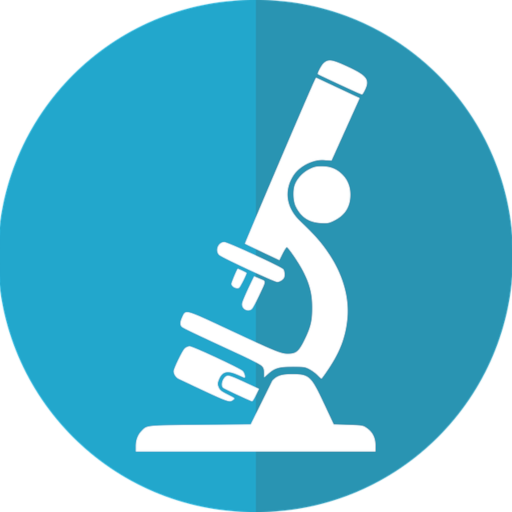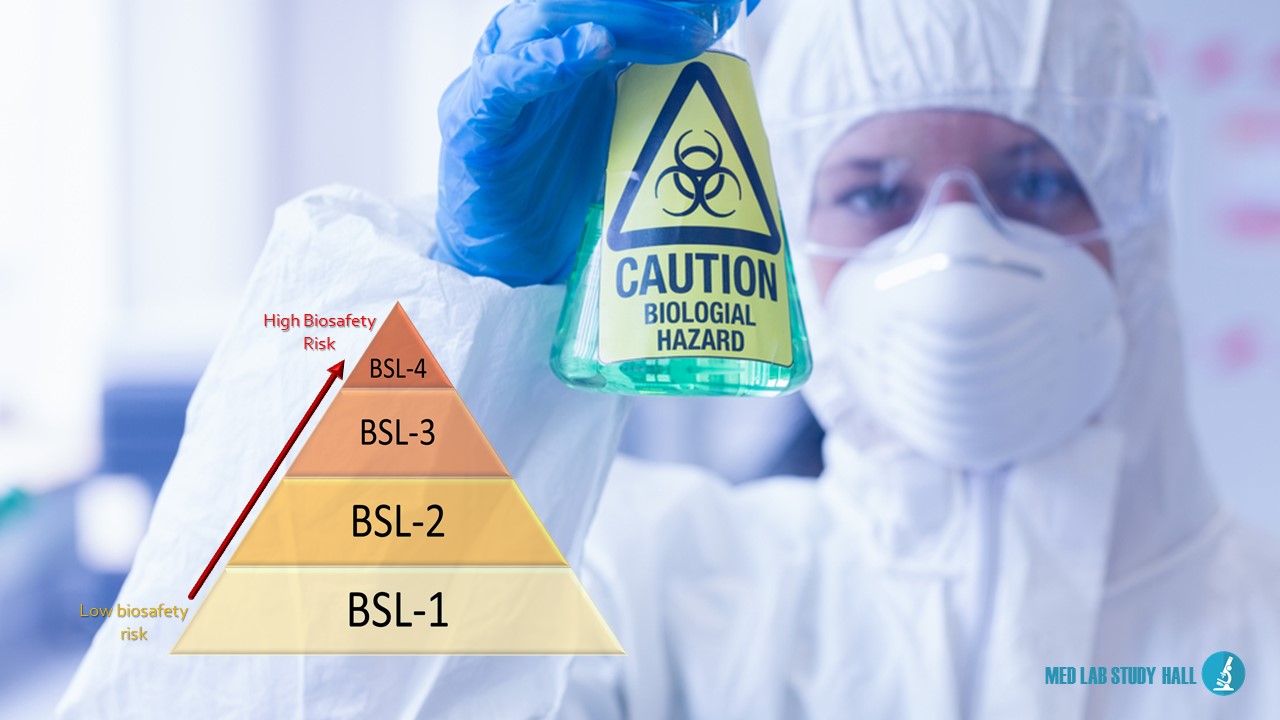Introduction
In part 1 of our Safety series, I provided an introduction to laboratory safety principles. Part 2 showed you what a Biological Risk Assessment was and how to do one for your laboratory. Part 3 taught you what a Job Hazard Analysis was and how to perform one for each process in your laboratory.
Today’s blog will explain what you do with the information gathered from the Risk Assessment and the Job Hazard Analysis by using it to assign the correct Biological Safety Level (BSL) to your laboratory.
Biological Safety Levels for Laboratories (BSL)
The 4 Biological Safety Levels were designed to decrease the risk of exposure to potentially infectious microbes (bacteria, fungi, viruses) for scientists working in the laboratory. Each BSL has defined ways to contain microbes by using laboratory safety practices, safety equipment, and facility design and construction to control the spread of the microbes unintentionally throughout the laboratory.
Of course, safety practices known as standard precautions are used by all medical laboratories as the very basic means of limiting the spread of infectious material. These include
- No eating, drinking or applying cosmetics or lip balm in the laboratory;
- Washing your hands after working with infectious microbes, between glove changes, and before you leave the laboratory, and;
- Decontaminating your work surfaces on a regular basis throughout the work day.
BSL build upon these standard precautions to provide even more safety for scientists when they work with infectious material. BSL-1 builds upon standard precautions and is designed for working with the least dangerous microbes. Each level builds upon the previous level, with BSL-4 being the highest level where scientists are working with the most dangerous microbes.
Biosafety in Microbiological and Biomedical Laboratories, 6th Edition provides detailed descriptions of each BSL, and I’ll briefly describe them for you below.
BSL-1
Infectious agents that are well-characterized and not known to consistently cause disease in healthy adult people and are expected to have minimal hazardous risk to the environment could be handled in a BSL-1 laboratory. A nonpathogenic strain of E. coli is an example.
The infectious risk is low; therefore BSL-1 does not require the laboratory to be separated from the general traffic areas of the facility. However, the CDC recommends that BSL-1 laboratories have doors to separate the working space from the rest of the facility to control who can enter the laboratory.
Special containment equipment, such as a biological safety cabinet, is not typically required. There are no special facility designs typically needed, although each laboratory should perform its own Biological Risk Assessment to determine if this is appropriate.
Scientists should receive specific training in the laboratory’s procedures and be supervised by a scientist with training in microbiology or a related science.
Scientists should wear personal protective equipment (PPE) such as laboratory coats/gowns, face protection (eyewear or splash shields), and gloves when handling primary specimens. Proper hand hygiene should be followed and a sink must be available for handwashing. Long hair or long beards should be tied back or contained in some manner so that they do not fall forward and get contaminated.
BSL-2
BSL-2 builds upon BSL-1. The infectious agents in BSL-2 laboratories are associated with human diseases and pose moderate hazards to scientists and the environment. Staphylococcus aureus is an example.
Scientists working in a BSL-2 laboratory should receive specific training for handling pathogenic agents and be supervised by a scientist competent in those processes and procedures.
In addition to BSL-1 recommendations, this level requires restricting access to the laboratory when work is being done so that only those people who know how to handle the infectious agents are in the work area. The CDC recommends a self-closing door in BSL-2 laboratories to help restrict access to the laboratory.
People who are not familiar with biosafety processes in the laboratory may unintentionally touch surfaces or items in the laboratory without realizing that they may be contaminated. Then if they touch their face, eat food, or use the restroom without hand washing, they could accidentally infect themselves. Keeping visitors and untrained people out of the laboratory is the best way to keep them from becoming infected.
BSL-2 laboratories should also have biological safety cabinets (BSC), which are pieces of equipment that the scientist puts their arms inside to perform laboratory procedures on the infectious agents. The BSC has a fan that pulls air through the cabinet and out through a filter before exhausting the air out of the cabinet. Infectious agents can cause disease if inhaled and using a BSC to open specimens and perform certain specimen manipulations helps protect the scientist from unintentional exposure by breathing in the aerosols formed that contain the infectious agent.
What happens to the waste created from the laboratory procedures? Isn’t it infectious?
Yes, it is! BSL-2 laboratory waste must be sterilized either by autoclaving it or another method that would decontaminate the waste and make it noninfectious. There are specific rules for accomplishing this. Vendors such as Stericycle provide laboratories with supplies and instructions for packaging the infectious waste before they pick it up to be treated and disposed.
BSL-3
BSL-3 builds upon BSL-2. The infectious agents in BSL-3 laboratories can cause serious or potentially lethal disease if inhaled. Mycobacterium tuberculosis (TB) is an example.
Scientists working in a BSL-3 laboratory should receive specific training for handling pathogenic and potentially lethal agents and be supervised by a scientist competent in those processes and procedures.
Scientists are monitored for signs and symptoms of infection and may need periodic testing such as TB tests or certain blood tests to determine if they have been exposed. They may also receive vaccinations for the infectious agents they work with in the laboratory.
Scientists may need to use respirators in addition to other PPE while working with the infectious agents. All procedures with infectious agents in a BSL-3 laboratory must be performed inside a biological safety cabinet of the appropriate rating for the type of infectious agents in the laboratory.
Special engineering and design features are part of BSL-3 laboratories to limit touching contaminated surfaces or breathing in contaminated air. A hands-free sink and eyewash should be available near the exit so that you can wash your hands without touching anything with them prior to leaving the laboratory. This also decreases the time you are in the laboratory once your hands are clean to limit possible contamination before you leave.
Exhaust air from biosafety cabinets and the room air cannot be recirculated throughout the room. They must be vented to the outside of the building. Only clean air from outside the room may be pulled in and forced to the outside of the building by the air handling system. This is called a negative pressure room.
Access to BSL-3 laboratories is restricted and controlled by the facility at all times. The laboratory entrance is through 2 sets of doors that self-close and lock.
Infectious waste in a BSL-3 laboratory must be decontaminated within the facility before being removed for final disposal outside the facility. This is preferably done inside the laboratory, but may be done elsewhere in the facility.
BSL-4
BSL-4 builds upon BSL-3. The infectious agents in BSL-4 laboratories pose a high risk of exposure by breathing in the aerosols generated when working with them. They cause frequently fatal diseases or they may be agents which have no vaccines or treatments. The most dangerous infectious agents are handled in these laboratories. Ebola is an example.
SARS-Cov-2 was also considered to be this dangerous when it first developed due to the fact that it was new, we did not know anything about how it caused infection and spread, and we had no treatments or vaccines at the time.
Scientists in BSL-4 laboratories receive specific and thorough training in handling extremely hazardous infectious agents. They must understand the various containment functions of the standard and special practices, the containment equipment, and laboratory design features like ventilation.
The CDC recommends that scientists change their clothes before entering a BSL-4 laboratory. They must also shower and fully decontaminate all materials before exiting.
All work with the infectious agents must be done in an appropriate Class III biological safety cabinet, or by wearing a full-body, air-supplied, positive pressure suit.
The laboratory should be isolated from general traffic patterns in the facility. Either a separate building or an isolated and restricted zone in the building would be appropriate. In addition, the ventilation must be isolated from the rest of the facility. The laboratory must have dedicated air supply and exhaust to the building’s exterior. I must also have dedicated vacuum lines and decontamination systems.
The infectious waste in a BSL-4 laboratory must be decontaminated by a verified method such as autoclaving prior to leaving the laboratory.
Use the RA and JHA information
Now that you have an idea of what is involved in creating laboratories at each biological safety level, take a look at your assessments to see what kind of infectious agent you’re dealing with. Is it something that does not cause disease typically, or is it something we know nothing about and we need to proceed with extreme caution?
Are the procedures easy enough to follow without causing an unintentional exposure? Are the procedures very involved and if a step in the process is bypassed, is the risk of exposure high?
Is the appropriate PPE and safety equipment available for the infectious agents you’re working with?
Is the facility designed to handle the infectious agents in your laboratory? Was it constructed properly to provide the designed safety features? Does the laboratory need to be isolated for the public, or can it be right next to the Emergency Department?
Are the appropriate scientists employed to perform the procedures and oversee the laboratory?
Are the proper waste disposal processes in place or available?
Match up the level of risk with the BSL category. Perform a gap analysis asking many of the questions mentioned above and determine what can be done safely and what things must be brought in or changed to meet the BSL safety requirements. Work with stakeholders to meet the gaps identified before proceeding any further with laboratory procedures if the risk is too high.
Centers for Disease Control and Prevention (CDC) Education
The CDC provides free education and training modules, including an introduction to the 4 Biological Safety Levels.
Conclusion
Keeping our laboratory scientists, the public, and the environment safe from biological hazards is the purpose of the BSL categories. Following these recommendations will help avoid outbreaks of infectious diseases due to laboratory handling and hopefully prevent future pandemics.

